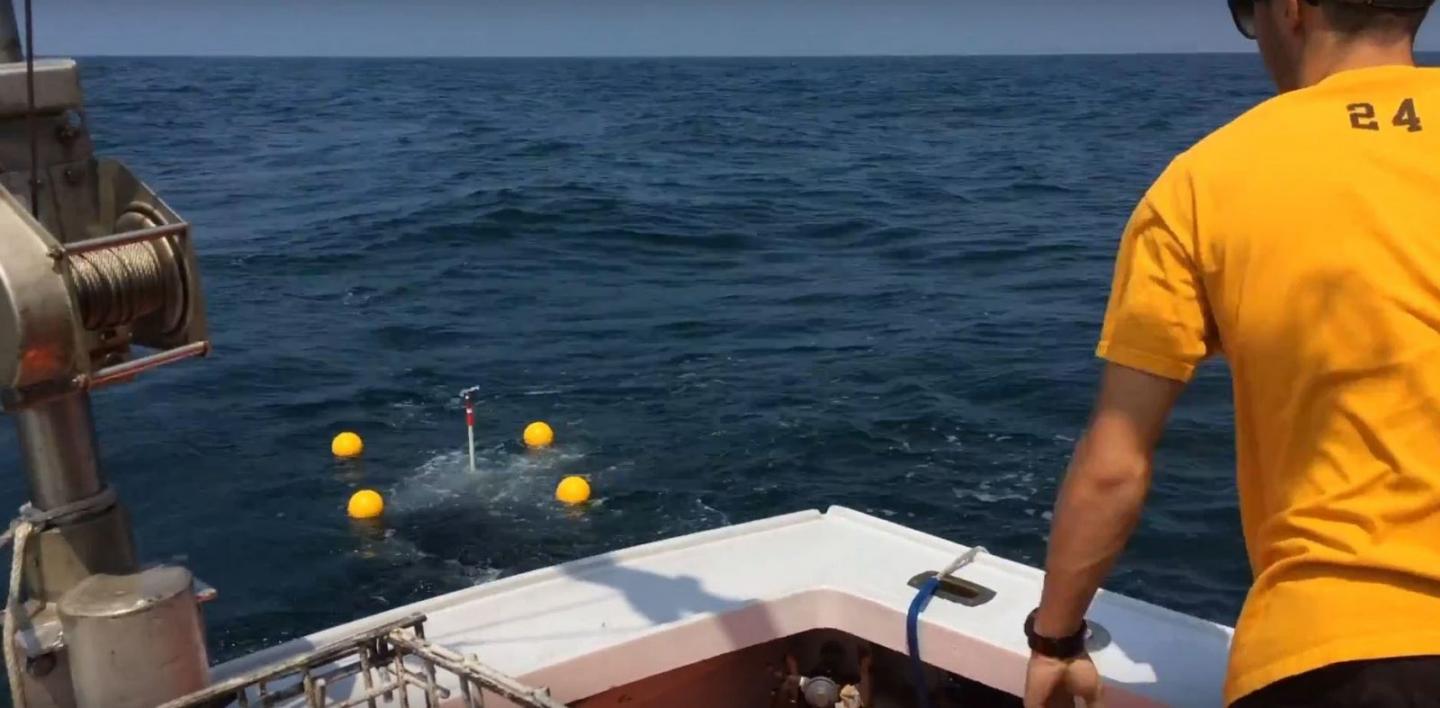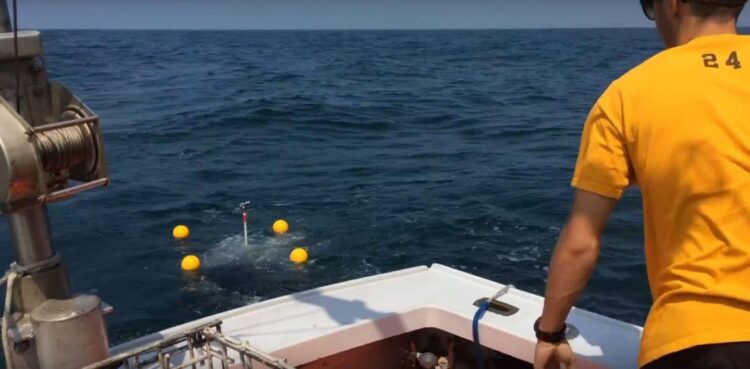
Credit: Virginia Tech
Each year, the U.S. Coast Guard performs thousands of search and rescue missions at sea. In situations where every minute matters, it is critical to have the most efficient ocean modeling data and algorithms at hand.
Researchers at Virginia Tech are part of a multi-institutional group using mathematical techniques with ocean models and experiments to better understand near-surface flow patterns and hidden flow structures. With more accurate modeling data, response teams can better predict the search area grid from the air, and reduce emergency response time when lives are on the line.
Throughout this study, published in Nature Communications on May 26, the research team has uncovered hidden transient attracting profiles – or TRAPs – in ocean-surface velocity data. These transient attracting profiles act as short-term collection zones for all floating objects, debris as well as persons in the water. When incorporated into search and rescue algorithms, the locations of the TRAPs give a more accurate prediction on regions to focus search efforts.
“From the moment they are alerted that someone is lost, search and rescue teams use sophisticated software to try to pinpoint the last known location in the water, factor in how much time has passed, and make their best prediction on how far they have drifted,” said Shane Ross, professor in the Kevin T. Crofton Department of Aerospace and Ocean Engineering. “By improving the modeling of drifting objects in unsteady currents, search teams will have more efficient probability computations that enable them to set a tighter search grid and make faster, safer rescues.”
Current flow models used in search and rescue operations factor in ocean dynamics, weather prediction, and in-situ observations, such as self-locating datum marker buoys deployed from air. According to the research team, even with high-resolution ocean models and improved weather prediction, search and rescue planning is still based on conventional practices, and rescuers rely on their hunches as much as sophisticated prediction tools.
Computational tools can predict how particles or objects are transported and reveal areas of the flow where drifting objects are likely to converge. In engineering terms, these patterns are called Lagrangian coherent structures. Unfortunately, calculating Lagrangian structures can often be time-consuming and computationally expensive.
For use in disaster response scenarios, transient attracting profiles are easily interpreted and can be computed and updated instantaneously from snapshots of ocean velocity data. This eliminates very expensive and timely computation, especially when short-time predictions are critically important in search and rescue. After six hours, the likelihood of rescuing people alive drops significantly.
These attracting profiles, where persons in the water are likely to collect, provide continuously updated and highly specific search paths. The inset shows a migrant boat that capsized on April 12, 2015 in the Mediterranean Sea.
In order to prove the predictive influence of transient attracting profiles in coastal waters ?– or identify the regions where objects or people are most likely to accumulate over a two- to three-hour period of time ?– the research team conducted multiple field experiments off the coast of Martha’s Vineyard in Massachusetts.
Using both Coastal Ocean Dynamics Experiment drifters and 180-pound OSCAR Water Rescue Training manikins, targets were released around areas of predicted transient attracting profiles with GPS tracking devices that reported location every five minutes. Even without accounting for wind-drag or inertial effects, the researchers observed that the TRAPs invariably attracted the floating drifters and manikins in the water over a two- to three-hour period.
Identifying transient attracting profiles on ocean surface velocity data can also have significant impact on the containment of environmental disasters, such as catastrophic oil spills. TRAPs provide critical information for environmental hazard response teams and have the potential to limit the spread of toxic materials and reduce damaging impact on the surrounding ecological systems.
###
The study is the result of a $2.8 million National Science Foundation grant focused on specific methods for the prediction, mitigation, and response to environmental flow hazards. Leading the published multi-institutional study is the School of Engineering and Applied Sciences at Harvard University. Joining Harvard and Virginia Tech are investigators from Massachusetts Institute of Technology, UCLA, Woods Hole Oceanographic Institution, the U.S. Coast Guard Office of Search and Rescue, and ETH Zurich.
Ross, one of the five co-principal investigators on the National Science Foundation project, collaborated at Virginia Tech with colleagues David Schmale, professor in the School of Plant and Environmental Sciences, and Craig Woolsey, professor in the Department of Aerospace and Ocean Engineering. Javier Gonzalez-Rocha, a doctoral candidate in aerospace and ocean engineering, and Alejandro Sosa, a recent graduate of the aerospace and ocean engineering program, also contributed to the research team and field studies.
Ross has a number of sponsored research projects focusing on the complex motion in flows, including a National Science Foundation study forecasting the spread of contaminants in the ocean, floodwaters, or atmosphere, and a study sponsored by the U.S. Department of Agriculture on the transport of pollen from genetically engineered switchgrass and hemp. He is also the past recipient of a National Science Foundation CAREER award in 2012 to study engineering tools to understand and predict fluid motions.
Media Contact
Suzanne Irby
[email protected]
Original Source
https:/





